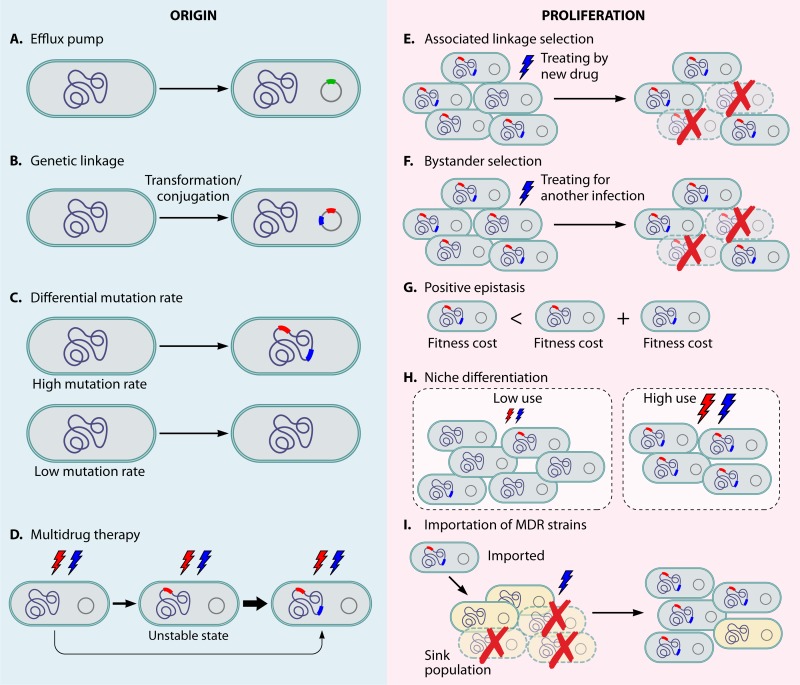FIG 1.
The mechanisms for the origin and proliferation of MDR strains. Red and blue lightning bolts indicate treatments with drug A and drug B. Green rectangles represent efflux pump genes. Red and blue rectangles represent drug A and drug B resistance determinants, respectively. (A) Efflux pump. Bacteria obtaining efflux pumps (green square) that extrude more than one antibiotic out of cells confers MDR. (B) Genetic linkage. If two resistance determinants are located in the same horizontally transferred element, when a strain acquires one resistance phenotype, it acquires both. (C) Differential mutation rate. Highly mutable lineages have higher frequencies of acquiring multiple drug resistance determinants than those that are not highly mutable. (D) Multidrug therapy with accelerated treatment failure in resistant infections. If treatment fails and singly resistant strains emerge, they are likely to obtain second drug resistance and be replaced. The thickness of the arrows reflects the relative transition probabilities between states. (E) Associated linkage selection. Resistance to a new drug (blue) occurs on a background of resistance to an older drug (red) following a change in treatment practices from drug A to drug B. The resistance to the older drug continues spreading because of the linkage to the resistance of the new drug and the selective pressure from the usage of the new drug. (F) Bystander selection. Resistance in one bacterium is advantageous because it allows strains of that species to survive when the host is treated for another infection with a drug that also kills that species. For example, if drug A is used to treat this species and drug B is used to treat another infection in the same patients, MDR strains survive and strains resistant only to drug A are killed. (G) Positive epistasis. If the cost of MDR is smaller than the total cost of each resistance determinant on its own, MDR strains may outcompete strains with a limited number of resistance elements and spread more quickly. (H) Niche differentiation. Multiple unrelated drug classes may be used more frequently in certain population subgroups, resulting in an excess of MDR when the high- and low-use subgroups/settings are considered together. (I) Importation of MDR strains. The MDR strains from a high-drug-use “source” population are introduced into a lower-drug-use “sink” population and are able to spread as a result of competing successfully with pan-susceptible strains due to their resistance to the drug (blue) used in the sink population.

